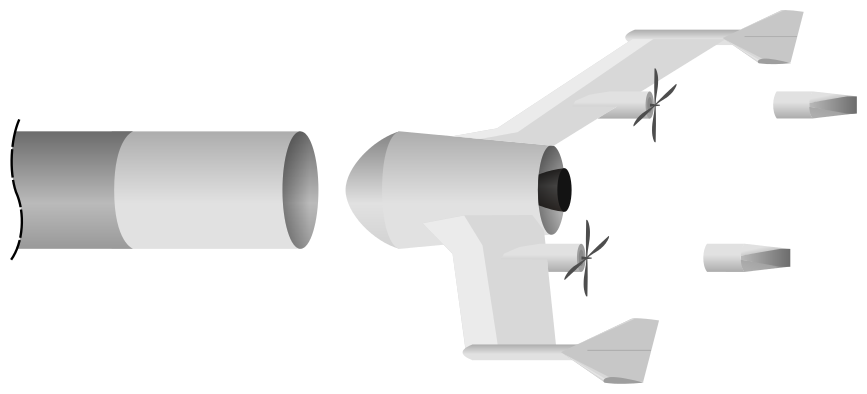Airbus Develops Reusable First-Stage Called ADELINE.
The European Aeronautic Defence and Space company was formed in 2000 by the merger of Aérospatiale-Matra, DaimlerChrysler Aerospace AG (DASA), and Construcciones Aeronáuticas SA (CASA). In 2014, the company name was changed to Airbus Group. It has three business divisions, Airbus which manufactures airplanes, Airbus Defence and Space (ADS) which works on weapons and space systems and Airbus Helicopters which manufacturers helicopters.
Since 2010, ADS has been secretly working on a radical new design for first stage rocket boosters which they have just made public. The Advanced Expendable Launcher with Innovative Engine Economy (ADELINE) is a reusable first-stage rocket that can land on a runway like an airplane. The ADELINE system is being designed to be integrated with an Ariane rocket manufactured by a company called Arianespace that is based in France.
Currently, first stage rockets splash down in the ocean after each launch. This practice adds up to five hundred million dollars to the cost of each launch. SpaceX is currently working on the reusable Falcon 9 launch system which is intended to land vertically back on the pad it was launched from.
The basic idea behind ADELINE is to recover the most expensive parts of the first-stage including the avionics, engines and propulsion bay. This would recover about eighty percent of the value of the first-stage which would reduce the overall cost of launches by thirty percent. Airbus hopes to have the ADELINE system operational by 2025.
ADELINE has an aerodynamic heat shield to protect the motor and avionics and make the craft more streamlined. It also has two small wings and turbofans to enable it to land on a runway like an airplane. The stubby ADELINE module sits below a cylinder that contains the fuel tanks. The multistage launch vehicle takes off and drops the first-stage. The ADELINE module is protected during launch by the fuel tanks above it. The ADELINE module drops away from the bottom of the first-stage fuel carrying cylinder and returns to the launch site to land on a runway. The fuel carrying section falls into the ocean like other first-stage rockets. The ADELINE module should be able to make ten to twenty flights.
So far, Airbus has spent over sixteen million dollars on the design of the ADELINE system but no hardware has been built. In order to move forward with the ADELINE project, Airbus will need major government support. Arianespace has also invested in the ADELINE project but completion of their new Ariane 6 rocket is their first priority.
Reducing the cost of launches is a high priority for governmental and private space launch firms. There is a thriving global business today in launching satellites for companies or countries that do not have their own launch capability. This marker will only grow and any system that reduces the cost of launches will give that system a competitive edge in the launch business. SpaceX and Airbus are two of the first companies to explore reusable launch vehicles but they will not be the last.
ADELINE diagram:
